 article icon
article icon
Science, Maths & Technology
Manual metal arc welding (MMA)
Welding is initiated by striking an electric arc between a flux coated electrode and the metal workpiece to be joined. A combination of melted base metal, and molten core wire from the electrode, forms the welded joint. Welding materials are shielded from contaminants in the atmosphere by gases produced from the flux coating.
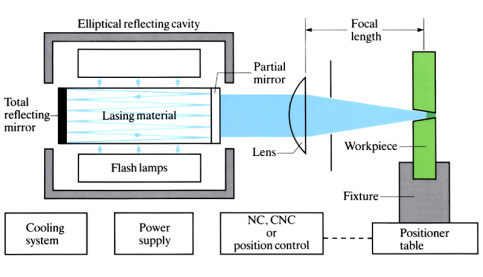 article icon
article icon
Science, Maths & Technology
Laser beam welding
Heat is generated by a concentrated, high energy laser beam directed at the joint to be welded. The surfaces of the workpiece melt, bonding the two parts together. Results in a narrow weld zone and HAZ. Combining laser and gas tungsten arc (GTA) welding can produce deeper weld penetration.
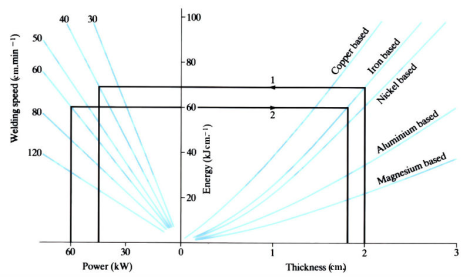 article icon
article icon
Science, Maths & Technology
Electron beam welding
Heat is produced by a high energy beam of electrons directed at the joint to be welded. Heat transfer is very localised, not by surface conduction, but within the workpiece itself, so no filler is required. Results in a narrow weld zone and HAZ. Process carried out either under vacuum, or non-vacuum.
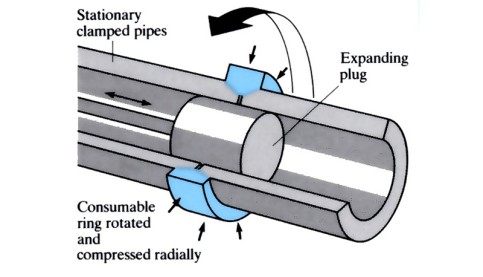 article icon
article icon
Science, Maths & Technology
Friction welding
By rotating one part against a fixed second part, friction occurs. The heat resulting from friction leads to plasticity in the material, then by administering controlled compressive pressures, the two parts are welded together.
 article icon
article icon
Science, Maths & Technology
Ultrasonic machining (USM)
The workpiece is held in a tank of slurry containing abrasive particles, the slurry is injected into the space between a vibrating tool and stationary workpiece. Material is abraded away until a mirror image of the tool is cut into the workpiece.
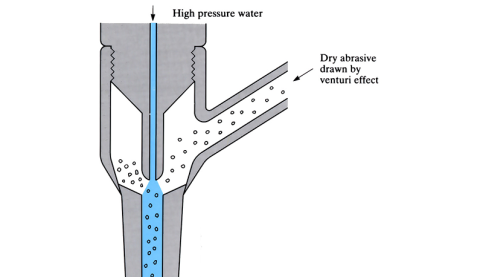 article icon
article icon
Science, Maths & Technology
Abrasive jet cutting
A high pressure, high velocity jet of water (or air), mixed with dry abrasive particles to form a slurry, is forced through a nozzle in the cutting head. The jet impinges on the surface of the workpiece, eroding away material.
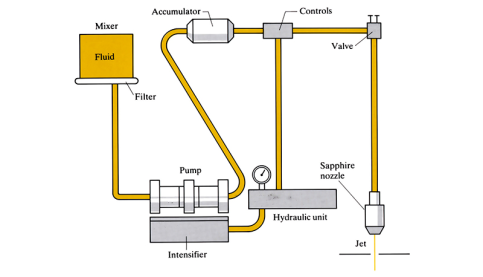 article icon
article icon
Science, Maths & Technology
Water jet cutting (Hydrodynamic cutting)
High velocity, high pressure water jets (or a mixture of water and an abrasive) are used to cut into the surface of the workpiece. Used mainly on non-metallic thin sheet material.
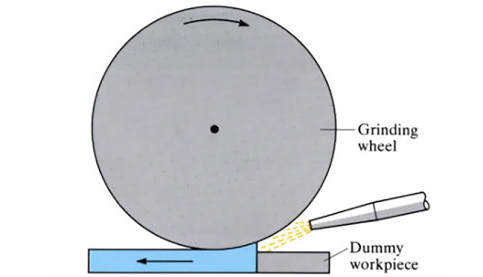 article icon
article icon
Science, Maths & Technology
Creep feed grinding
Effectively a milling process, as high volumes of material can be removed, producing deeper cuts, in a single pass of the grinding wheel. Final surface finishing of the workpiece is provided during a second pass of the grinding wheel, which has by then been dressed by a small diamond roller. Chips of workpiece material are washed away by a jet ...
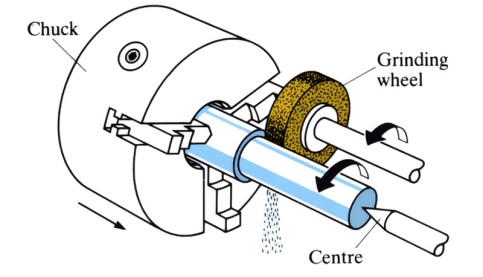 article icon
article icon
Science, Maths & Technology
Centreless grinding
Differs from the conventional grinding process in that the workpiece is held between two grinding wheels, rotating in the same direction at different speeds, and a work rest platform. The speed of the grinding wheels rotation relative to each other determines the rate at which material is removed.
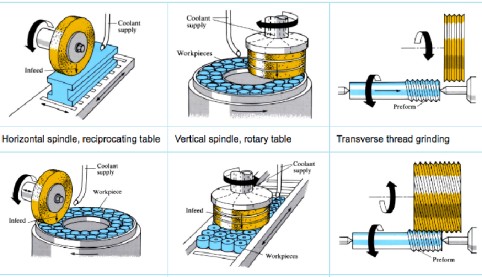 article icon
article icon
Science, Maths & Technology
Grinding
A mechanical process using a rotating grinding wheel made from abrasive material containing small particles of grit ranging from fine to coarse. The wheel revolves around a central axis, making contact with the surface of the workpiece, while the particles act as cutting tools that cut chips from the material.
 article icon
article icon
Science, Maths & Technology
Multipoint cutting (rotational)
A mechanical machining process, where a tool with more than one sharp cutting edge rotates on a horizontal or vertical axis, to remove material from the workpiece.
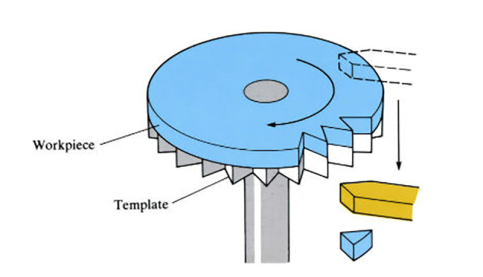 article icon
article icon
Science, Maths & Technology
Multipoint cutting (translational)
A mechanical machining process, where a tool with more than one sharp cutting edge (‘teeth’) moves horizontally or vertically to remove material from the workpiece.